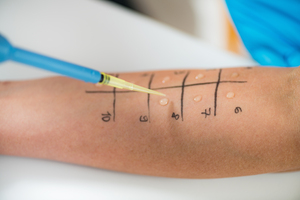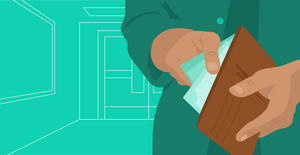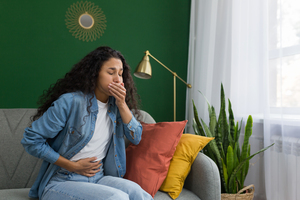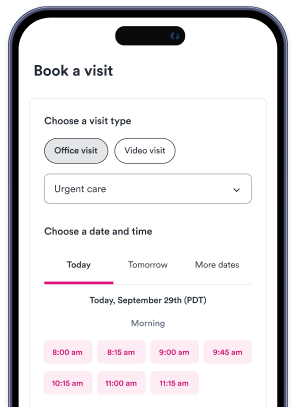Key points
- Diaper rash, common in babies and toddlers, can be treated at home by keeping the area clean and dry, and applying a protective cream.
- Eczema, a common skin condition in children, can be managed by keeping the skin well-moisturized with gentle, fragrance-free creams or ointments.
- Hives, an allergic reaction, can be controlled by giving an antihistamine to reduce itching and swelling, and avoiding the allergen in the future.
- Hand, foot, and mouth disease, a viral infection, can be managed with fluids, rest, and over-the-counter pain relievers to ease discomfort.
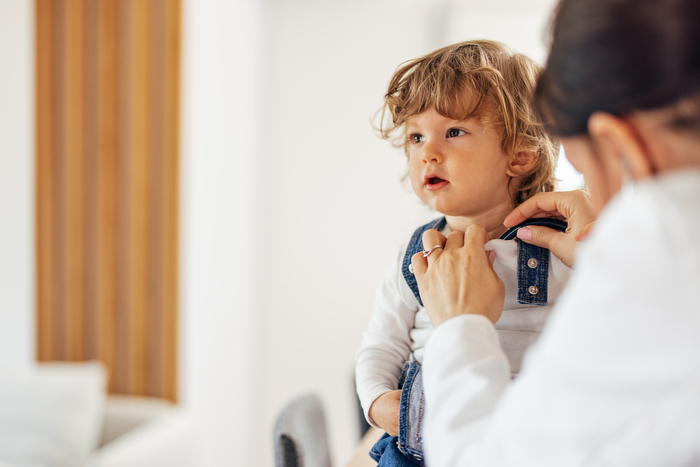
Childhood rashes are a common concern for many parents and caregivers. While they can look alarming, most rashes in children are harmless and often resolve on their own. However, understanding the different types of rashes, what causes them, and how to treat them properly can make a big difference in your child’s comfort and recovery. More importantly, knowing when a rash requires medical attention ensures your child gets the care they need without unnecessary worry. Read on to explore some of the most common childhood rashes, helping you identify and manage them confidently.
1. Diaper Rash
Diaper rash is one of the most common skin problems in babies and toddlers, and it usually shows up as red, irritated skin on the buttocks, genitals, or thighs. It happens when the sensitive skin in these areas gets wet or irritated for too long, often from moisture trapped by diapers, friction from diaper changes, or even from certain wipes. The good news is that diaper rash is usually easy to treat at home:
- Keeping the area clean and dry is key, so changing diapers frequently and letting your child have some diaper-free time can really help.
- Applying a protective cream, like one with zinc oxide, creates a barrier that soothes the skin and helps it heal faster.
However, if the rash starts to get worse, if you notice blisters, or if it doesn’t start to improve within a couple of days, it’s a good idea to check in with an urgent care doctor to make sure there isn’t an infection or something else going on.
2. Eczema (Atopic Dermatitis)
Eczema, also known as atopic dermatitis, is a skin condition that many kids deal with, and it usually shows up as dry, itchy, red patches on places like the cheeks, elbows, or behind the knees. It can be really uncomfortable for your child, especially when the skin feels tight or starts to crack. Eczema often runs in families and can be triggered by things in the environment, like harsh soaps, changes in the weather, or even stress. The best way to manage eczema is by keeping the skin well-moisturized with gentle, fragrance-free creams or ointments that help lock in moisture. Sometimes, steroid creams are used to reduce inflammation and itching, but these should only be used as directed. If your child’s eczema isn’t getting better, if the itching is nonstop, or if the skin looks cracked or infected, it’s important to see a doctor to get the right treatment and keep your child comfortable.
3. Hives (Urticaria)
Hives are those sudden, raised red bumps or welts that pop up on the skin and often fade just as quickly as they appear. They can look a bit scary, but they usually don’t last long and tend to come and go in different spots. Hives happen when the body reacts to something it’s allergic to—this could be certain foods, medications, insect bites, or even a viral illness. If your child gets hives, giving them an antihistamine can help reduce the itching and swelling. It’s also important to determine what caused the reaction so you can avoid those triggers in the future. However, if you notice swelling around your child’s lips or tongue or if they start having trouble breathing, it’s important to get urgent medical help right away, as this could be a sign of a serious allergic reaction.
4. Hand, Foot, and Mouth Disease
Hand, foot, and mouth disease is a common viral infection that mostly affects young children, especially those in daycare or school settings. It usually starts with red spots or small blisters that show up on the palms of the hands, the soles of the feet, and inside the mouth. These spots can be uncomfortable or painful, making it hard for kids to eat or drink sometimes. Since a virus causes HFM disease, there’s no specific medicine to cure it, but you can help your child feel better with plenty of fluids, rest, and over-the-counter pain relievers to ease any discomfort. Most kids recover in about a week without any problems. However, if your child refuses to eat or drink, or if they develop a high fever, it’s a good idea to see an urgent care doctor to ensure they stay safe and receive the necessary care.
5. Impetigo
Impetigo is a common skin infection in kids that usually shows up as red sores around the mouth or nose. These sores quickly turn into crusty patches with a distinctive honey-colored crust, which can be pretty noticeable. It happens when bacteria get into the skin, often after a small scratch, insect bite, or other break in the skin. Because impetigo is highly contagious, it’s important to start treatment as soon as you notice it. Usually, a doctor will prescribe an antibiotic ointment or, in some cases, oral antibiotics to help clear up the infection. Since impetigo can spread easily to other parts of the body or to other people, you should see a doctor right away if you suspect your child has it. Early treatment helps your child heal faster and keeps everyone else safe.
6. Heat Rash (Prickly Heat)
Heat rash, also known as prickly heat, is a common problem when kids get too hot and sweaty, especially during hot and humid weather. It shows up as tiny red bumps or sometimes small blisters, often appearing in skin folds like the neck, armpits, or behind the knees. This happens because sweat glands get blocked, trapping sweat under the skin and causing irritation. The best way to treat heat rash is to keep your child cool and comfortable—think cool baths, loose and breathable clothing, and making sure their skin stays dry. Most of the time, heat rash goes away on its own in a few days, but if you notice the rash getting worse, looking infected, or not improving, it’s a good idea to check in at urgent care to make sure your child gets the right care.
7. Ringworm (Tinea)
Ringworm is a common fungal infection that can pop up on your child’s skin as circular, red patches with scaly edges and clearer centers, almost like a ring—hence the name. It might look a little strange, but it’s usually not painful, just itchy and annoying. Ringworm spreads easily through direct skin contact or by sharing things like towels, clothing, or sports gear, so it’s important to keep an eye out and prevent it from spreading to others. Treating ringworm usually means using antifungal creams applied right to the affected areas, but if the infection is on the scalp, your doctor might prescribe oral medications to get rid of it completely. If you’re unsure whether your child’s rash is ringworm or something else, or if the rash isn’t getting better with over-the-counter treatments, it’s a good idea to go to urgent care for a proper diagnosis and the right prescription.
When to visit urgent care for a rash
While most childhood rashes are harmless and can be treated at home, there are times when you should seek urgent medical care to keep your child safe:
- If you notice that the rash is spreading quickly or looks like it’s getting worse by the hour, it’s a sign to get help right away.
- If your child has a rash along with a fever, swelling, or any trouble breathing, these could be signs of a serious allergic reaction or infection that needs immediate attention.
- Rashes that come with blisters, oozing, or other signs of infection are also a red flag and shouldn’t be ignored.
- If your child is a baby under six months old and develops a rash, it’s always best to have a doctor check it out, since young infants are more vulnerable to infections and complications.
When in doubt, trust your instincts and get your child evaluated—it's better to be safe and get peace of mind.
Not sure about that rash? Book a same-day visit to urgent care
Not sure about that rash? Don’t wait—book a same-day visit at urgent care for a quick evaluation and peace of mind. Use Solv to easily find nearby urgent care clinics and get your child the fast, expert care they need to feel better sooner.
FAQs
What are some common types of rashes in children?
Some common types of rashes in children include diaper rash, eczema, hives, hand, foot and mouth disease, impetigo, heat rash, and ringworm.
How can I treat my child's diaper rash at home?
Diaper rash can be treated at home by keeping the area clean and dry, changing diapers frequently, and letting your child have some diaper-free time. Applying a protective cream like one with zinc oxide can also help soothe the skin and aid in healing.
When should I seek medical attention for my child's rash?
You should seek medical attention for your child's rash if it is spreading quickly, if it is accompanied by a fever, swelling, or trouble breathing, if it has blisters or oozes, or if your child is under six months old. These could be signs of a serious allergic reaction or infection that needs immediate attention.
What is the best way to manage eczema in children?
The best way to manage eczema in children is by keeping the skin well-moisturized with gentle, fragrance-free creams or ointments. In some cases, steroid creams may be used to reduce inflammation and itching, but these should only be used as directed. If the eczema isn't improving, it's important to see a doctor.
How can I prevent my child's heat rash from getting worse?
To prevent your child's heat rash from getting worse, keep your child cool and comfortable. This can involve giving them cool baths, dressing them in loose and breathable clothing, and ensuring their skin stays dry. If the rash worsens, looks infected, or doesn't improve, seek medical attention.





